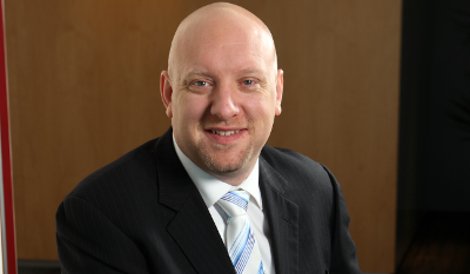Companies usually overhaul and consolidate data center infrastructure for one of two reasons: to cut costs or to support growth. For Citrix, one of the leading server and desktop virtualization technology vendors, it was the latter. Last year, the company kicked off a consolidation project to lay foundation for its next phase of growth.
In phase one of the multi-year, multi-million-dollar effort, the company launched a data center in Singapore, which now supports services previously hosted out of its Sydney and Bangalore data centers. Space occupied by the two older data centers in Australia and Bangalore will be re-purposed.
Stuart Driver, senior director of worldwide IT operations at Citrix, says the end goal is to shut down all regional data centers the company has around the world, located within leased office buildings it occupies. This will allow for its infrastructure to be centralized into a few core data center facilities operated by commercial colocation providers. “The main corporate data center has been in a colo for many years now, in Miami, and the regional data centers have been in our leased office space,” Driver says. The idea is to take the burden of data center operations off the shoulders of the real estate facilities teams that run the company’s office buildings.
The project started with Singapore, and this year, Driver’s team expects to relocate a regional data center in its London office to a colo facility in Amsterdam. This infrastructure will go live just after the middle of this year and by 2014 the team will be working on relocating IT infrastructure in its Silicon Valley office into a colocation data center in the same region. Citrix’ data center provider in Miami is Terremark, a Verizon subsidiary, and the Singapore colo is operated by Equinix.
Driver says he does not expect to go with different providers in Amsterdam and California, as the company already has “long-standing relationships” with both data center companies it relies on. Citrix is using about 2,600 sq ft of space in Miami, while in Singapore it is occupying about 900 sq ft, Driver says. Its Amsterdam footprint will be similar to the footprint in Singapore.
Walking the walk
The strategy is to replace most of the hardware with new higher-capacity gear, while retaining whatever equipment has not yet reached the end of its useful life, moving it to colo facilities. The hardware refresh will provide more computing horsepower for what naturally is a highly virtualized environment.
The company currently has 130 physical servers in the Equinix data center in Singapore, running about 1,500 virtual machines, including both Citrix XenServer virtual servers and XenDesktop virtual desktops. The data center was delivering 1,400 virtual desktops on day one of its launch, Driver says. When we talked to him, in early March, the team was still slated to move equipment in Sydney that would not be decommissioned. Once that was done, Driver expected to bring the number of virtual desktops running out of Singapore to 2,500.
Driver’s team also uses the company’s NetScaler load-balancing product. Pitched as the load-balancer for the enterprise, its functionality runs the gamut – from application availability management through attack protection and firewall.
A big part of the infrastructure-overhaul project is staff mobility, which Citrix uses its own technology to enable. It uses its XenApp product to provide enterprise applications as a service. It enables users to virtualize Windows applications and host and manage them out of a central data center.
Another piece that enables mobility at Citrix is its collaboration platform called ShareFile, which basically allows users to store data centrally, while providing access from remote locations.
There is nothing special about the server hardware Citrix is using. Driver says the company did not have any special arrangements with hardware vendors, using a combination of servers from the “top three or four [vendors] that everybody knows”.
The importance of NetApp OS
Driver says he does not mind naming the storage vendor, however, as the technology is an important part of the consolidation strategy. Citrix is using NetApp storage, which offers advanced storage software technologies, such as de-duplication and snap-mirroring. These played a crucial role in moving data from one site to another.
“Their technology is very beneficial in this type of migration,” Driver says. “That was very much a key part of our strategy – to be able to use that technology to replicate [environments] in a very efficient way.”
Citrix staff who were using virtual machines running in Sydney went home one Friday evening and by the time they returned to work the following Monday their desktop environments were supported by servers in Singapore, according to Driver.
The reason the company’s consolidation program started with Singapore is straight-forward: the Asia Pacific market or, more specifically, its rate of growth. Citrix is growing overall but in Asia Pacific this growth is faster than anywhere else. Driver says as more employees come on board, it is important to set up a data center platform that will enable this growth and not hamper it.
This article first ran in the latest edition of DatacenterDynamics FOCUS magazine.
Download the latest white papers from Citrix here

